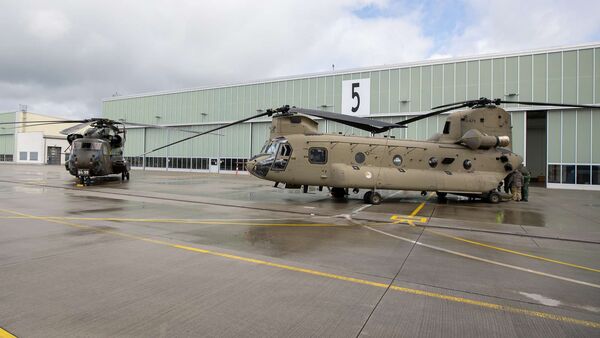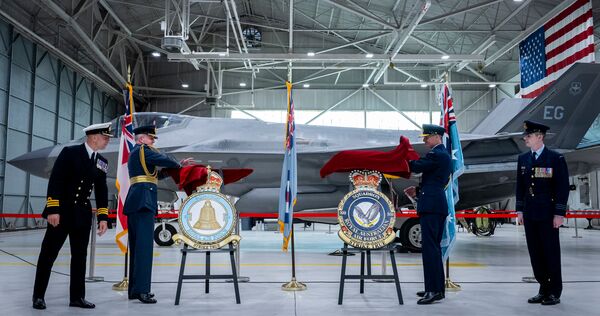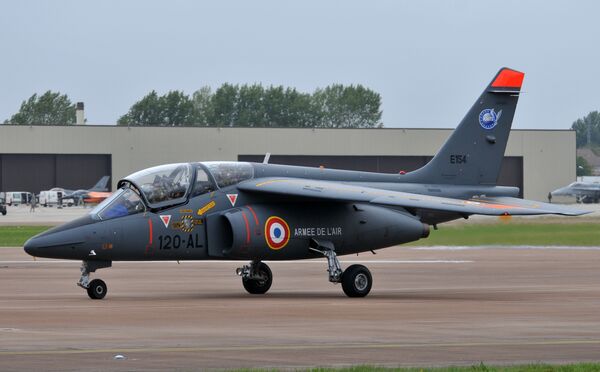- About
- Intara
- Capabilities
- Advisory
- Resources
- News
- Store
Airshow China 2021: Janes analysis of a highly anticipated event
27 September 2021
by Kelvin Wong
As Airshow China 2021 kicks off, Kelvin Wong, unmanned systems editor at Janes explores the unique flavour of China’s premier national aerospace and defence exhibition series and previews the some of the new systems that will debut at this year’s event
The 13th iteration of the biennial China International Aviation and Aerospace Exhibition, also known as Airshow China, promises to be yet another brief but valuable window of opportunity to observe China’s growing ability to indigenously develop and field advanced equipment.
This year’s edition runs from 28 September to 3 October, postponed from its original date in November 2020 by Covid-19, and is being staged amid stringent domestic and international travel restrictions, expected to mean there will be fewer foreign visitors and major commercial and military equipment deals announced.
A highly anticipated event
Airshow China is much more than just a commercial and military aviation showcase, with a broad range of combat vehicles, airborne and ground-based electronic warfare systems, radars and missiles on display, as well as a large but still growing selection of air, land and maritime unmanned systems.
Airshow China is a key soft power event used by Beijing to highlight the country’s significant progress and innovation in defence technologies. Previous events have revealed new and more capable aircraft, such as the FC-31 stealth fighter prototype, J-20 multirole stealth combat aircraft, Y-20 strategic airlifter, and KJ-200 airborne early warning and control aircraft.
With Beijing aspiring to expand its stance on the world stage and the People’s Liberation Army (PLA) rapidly modernising to support President Xi Jinping’s vision of an assertive and revitalised China, this year’s event will be used as a platform to demonstrate that the country is rapidly scaling the technology ladder in its quest to cement itself as a leading regional and global power.
Latest developments
Snippets of what can be expected at Airshow China 2021 have emerged in the weeks leading up to the exhibition via Chinese social media. What is already apparent is the increased variety of equipment that has recently entered service – or is soon to do so – with the PLA’s air and ground forces, such as the electronic warfare version of the locally made, twin-engine Shenyang J-16 multirole combat aircraft designated the J-16D.
The increasing maturity of unmanned systems in PLA service is also clearly demonstrated with the show debut of the PLA Air Force’s (PLAAF’s) Guizhou Aviation Aircraft Corporation WZ-7 Xianglong (Soaring Dragon) unmanned aerial vehicle (UAV). Roughly analogous in function – if not performance – with the US-made Northrop Grumman RQ-4 Global Hawk platform, the WZ-7 is the PLAAF’s primary high-altitude long endurance UAV for strategic reconnaissance operations.
Using commercially available satellite imagery, Janes has over time documented significant WZ-7 activities in airbases responsible for covering strategically vital areas. These include: Shigatse Peace Airport in the Tibet Autonomous Region near the disputed Doklam tri-junction with India (available to customers HERE); the north-eastern Yishuntun airbase covering the North Korean border; and Lingshui naval airbase on Hainan Island, a key staging point for military operations in the South China Sea.
Series production of the type continues at Guizhou’s Corporation’s production facility adjacent to Anshun-Huangguoshu airport (subscribers can read this HERE).
Also making its Airshow China debut will be the PLAAF’s WZ-8 high-speed reconnaissance UAV first unveiled during a large-scale military parade on 1 October 2019 in Beijing to mark the 70th anniversary of the founding of the People's Republic of China.
No official information on the WZ-8 UAV has been disclosed to date, but Janes sources indicate that the aircraft is powered by two closed-cycle, liquid-fuelled rocket engines and functions as an air-launched, high-altitude, unmanned reconnaissance aircraft. It can be deployed by the Xian H-6N strategic bomber, which features a modified ventral fuselage section to accommodate the UAV.
The WZ-8 UAV forms an integral part of an innovative and comprehensive early warning sensor network that comprises ground-, maritime-, air-, and space-based surveillance assets. Within that network, the WZ-8 is used to visually confirm satellite detection of strategic targets such as aircraft carriers at stand-off ranges, using its high transit speed to cover long distances quickly and cue land-based ballistic missiles such as the Dongfeng-26 (East Wind-26, or DF-26).
In line with past practice, China Aerospace Science and Technology (CASC) will also be taking the opportunity to announce its latest unmanned aircraft developments, including the new twin-turbofan powered Caihong-6 (Rainbow-6, or CH-6) armed reconnaissance UAV. First revealed by Janes in April 2021, the CH-6 adopts a hitherto unseen airframe design for any Chinese-made platform with a chined fuselage, tapered wings terminating in split winglets, and a T-tail assembly.
Closing thoughts
Taken together, these developments send clear signals of China’s intent to acquire advanced military technologies that will not just enhance its standing in the immediate region and beyond, but also enable the PLA to achieve President Xi’s vision of a fully networked and modernised force by 2035 and attain “world-class military” status by 2049.
National events such as Airshow China provide a window into this progress and surprisingly rapid real world follow ups.
For example, the twin-engine TB001 UAV prominently exhibited at the 2018 event and in late August 2021, Japan Air Self-Defense Force fighter aircraft encountered exactly that type when they were scrambled to intercept potential incursions into Japanese airspace on two occasions (HERE).
According to Janes forecasts, China’s defence budget will grow by about 65% – from approximately USD258 billion to USD426 billion – between 2021 and 2030.
Up to USD110 billion of this figure will be used for investment funding that will support efforts to restructure its large but unwieldy defence industry, which is still dominated by well-resourced but often inefficient state-owned primes and spur innovation through competition with the private-sector and expanding its access to foreign technology networks.
This imperative will only gain further importance for China in the future, with the US belatedly but surely ramping up its ability to engage near-peer competitors in the Indo-Pacific region and concurrently working with like-minded partners to stymie what Washington sees as Chinese military expansion.
.png?sfvrsn=c0b9d9a5_1)
RNLAF helps Luftwaffe prepare Chinook capability
19 April 2024
by Gareth Jennings


A Dutch Chinook (foreground) arrived at Holzdorf Air Base in mid-April to help the Luftwaffe prepare for the arrival of its own Chinooks into the station from 2027. In the background is a Luftwaffe CH-53G currently based at the location. (Bundeswehr)
The Royal Netherlands Air Force (RNLAF) is helping the Luftwaffe prepare for its upcoming Chinook heavy-lift helicopter capability, dispatching one of its own helicopters to the type's future operating station in mid-April.
The Bundeswehr said on 18 April that an RNLAF CH-47F Block 1 Chinook landed for the first time at Holzdorf Air Base (also known as Schönewalde), south of Berlin, to help the Luftwaffe prepare for the arrival of the first of its CH-47F Block II Chinook Standard Range (SR) air-to-air refuelling (AAR)-capable heavy-lift helicopters from 2027 to 2032.
“With the future stationing of the CH-47, Holzdorf Air Base will become a hub for helicopter transport. The [Luftwaffe] is gaining initial experience with the Chinook transport helicopter with its Dutch allies – in flight operations, refuelling, and training,” the Bundeswehr said.
RAF, RAAF reform respective 80 Sqns as US-based F-35 data centres
18 April 2024
by Gareth Jennings


The chiefs of the RAF and RAAF reconstituting their respective 80 Squadrons during a joint ceremony at Eglin AFB in the US. (Crown Copyright)
The UK Royal Air Force (RAF) and the Royal Australian Air Force (RAAF) stood up their respective 80 Squadrons on 17 April to serve as US-based data units for the Lockheed Martin F-35 Lightning II Joint Strike Fighter (JSF).
Announced by the RAF, the two separate but linked squadrons were reconstituted during a joint ceremony at Eglin Air Force Base (AFB) in Florida.
“At the event, the [UK] Chief of the Air Staff, [Air Chief Marshal] Sir Richard Knighton, and [Australian] Chief of the Air Force Air Marshal Robert Chipman, formally awarded the dormant 80 Squadron number plates for each service to their respective teams within the Australia, Canada, and United Kingdom Reprogramming Laboratory [ACURL],” the RAF said.
France touts new modular trainer aircraft with Spain, UK
18 April 2024
by Gareth Jennings


With France having an approaching requirement to replace its Alpha Jets, the country has touted the possibility of a joint modular solution with Spain and the UK. (Janes/Patrick Allen)
France has raised the possibility of developing or acquiring a new modular advanced jet trainer aircraft with Spain and the United Kingdom.
Responding to a question in the National Assembly on 16 April, Minister of the Armed Forces Sébastien Lecornu said that, with France's Dassault/Dornier Alpha Jets nearing the end of their service lives, the country is considering a replacement tied to the future training requirements of its two European neighbours.
“Beyond 2032 … all solutions are conceivable and being studied, particularly with the United Kingdom and Spain,” the minister said, adding, “These solutions consist of developing or acquiring a modular aircraft that meets the needs of both [the Patrouille de France national aerobatic display team] and ‘Red Air', but also [other] aircraft, in the light of the [training requirement for the Future Combat Air System (FCAS)/Système de Combat Aérien du Futur (SCAF)] and its manned [aircraft component], the NGF [New Generation Fighter].”
As Airshow China 2021 kicks off, Kelvin Wong, unmanned systems editor at Janes explores the unique ...
Latest Podcasts
Iran Israel analysis
In this podcast Janes analysts discuss the Iranian attacks on Israel on the 14 April. They highlight the military systems used by Iran and the performance and impact of these on Israel. They also discuss the implications of this attack goi...
Listen nowJanes Case Studies
Using Janes Intara to build a common intelligence picture: Russian build up on the Ukrainian border
View Case StudyNews Categories
 Security Details
Security Details